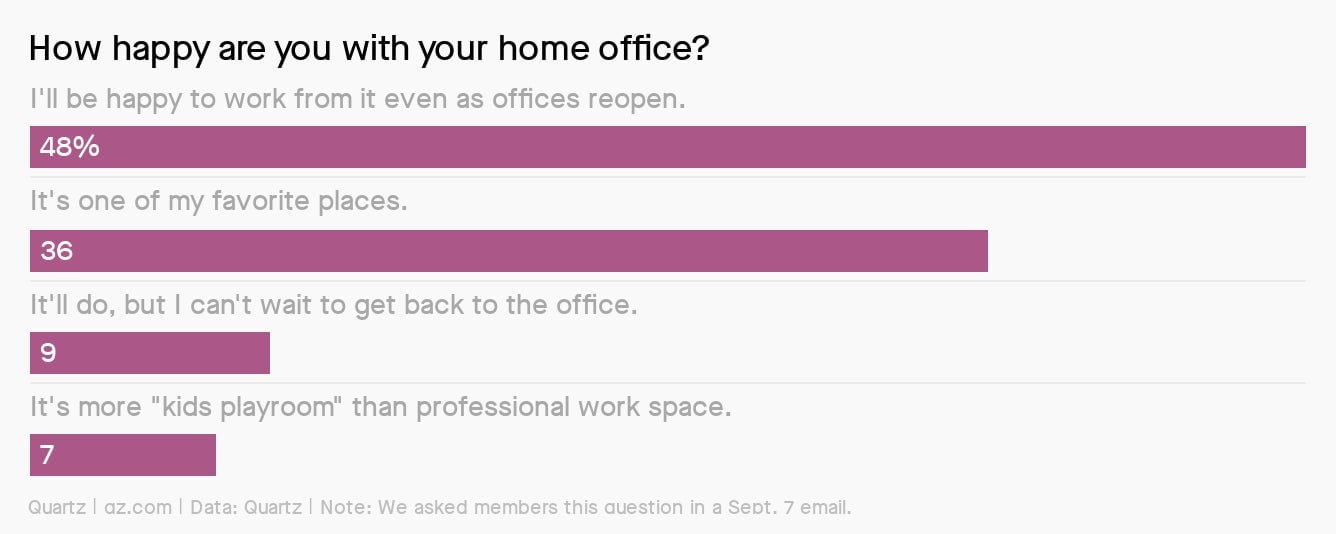This week in membership: The virtual, borderless team
{{section_end}} {{section_start}}

{{section_end}} {{section_start}}
🤔Here’s Why
1️⃣ The coronavirus pandemic has shown the value and potential of borderless teams. 2️⃣ The diversity of global teams is their biggest strength. 3️⃣ Leaders of successful global teams harness the perspectives of their employees by creating stable frameworks for them to do their work. 4️⃣ They also know how to create trust, quickly. 5️⃣ Getting better at remote work may usher in the next phase of globalization.
📝 The Details
1️⃣ The coronavirus pandemic has shown the value and potential of borderless teams.
As we work out of our living rooms, connected to our teammates by Zoom and Google Meet, we are being asked to leapfrog distances, and operate across multiple cultural contexts and geographies without being able to rely on office norms. The pandemic has compelled us to understand the lives of our colleagues in ways we might not have before.
Global, virtual teams have long had to contend with the challenges we are facing now, and offer lessons for ways that we can work better. The ability to work productively across these distances was already an asset before the pandemic. Now it’s a necessity.
2️⃣ The diversity of global teams is their biggest strength.
Research has also shown that a global team’s diversity of perspectives, experiences, and information networks can lead to more creative decision-making and problem solving. Emily Nelson, a deputy chief flight director at NASA’s Johnson Space Center in Houston, Texas, says working for more than 20 years on International Space Station operations, and being in constant contact with international peers, has shown her the value of different approaches.
Nelson explains that in space exploration, math is a common language, as are scientific principles, she says. But the way those principles are interpreted into engineering designs and practices is different across countries, such as between Russia and the US. These differences have helped her be more open-minded and innovative in her work, Nelson says. “You don’t have to agree with a different train of thought to allow it to spur you on to having different creative solutions to the problems that are facing you.”
3️⃣ Leaders of successful global teams harness the perspectives of their employees by creating stable frameworks for them to do their work.
When managed well, dispersed teams can be highly productive, working in relays across time zones. To achieve this, they rely on a stable structure and workflow to unlock some of the biggest advantages of remote work and manage the structural power dynamics at play.
Effective team leaders then consider people’s individual people’s contexts when creating the team’s structures and roles. “The very simple truth is that the most important tool managers have, is perspective taking,” says Mark Mortensen, a professor of organizational behavior at INSEAD, and co-director of the international business school’s program for digital leaders. “It’s about their ability to put themselves in the shoes of the people…and understand their experience of the situation.”
4️⃣ They also know how to create trust, quickly.
A lack of trust between co-workers can quickly lead to a breakdown in teams, particularly those that work across geographies and cultures. Research has shown that the quicker a manager can establish trust, the more efficiently a team can work on a task, and the more resilient it is to the inevitable stresses caused by time zones, cultural differences, pressures, miscommunications, and conflict. Academics call a team’s ability to do this at the beginning stage of a project “swift trust formation.”
Swift trust can lead to a more permanent form of trust as people see the predictability in their teammates’ approach to working—even if it’s different from how they do things. Martha Maznevski, a professor of organizational behavior at Ivey Business School at the University of Western Ontario, describes this as a process of moving from “head trust”—a cognitive leap of faith that’s created and tested at the beginning of a team’s formation—to “heart trust,” an affective state that’s cemented through experiences.
5️⃣ Getting better at remote work may usher in the next phase of globalization.
Globalization—the ideal of an interconnected world—is predicated on the idea that the world is stronger working together than it is split apart. But it has proven politically divisive, in large part because its costs and benefits have not been shared equally. If the expansion of remote work makes it easier and more common to work with colleagues across borders, could it also make globalization more popular? We asked experts what kind of impact the dramatic shift in working from home precipitated by Covid-19 might have on global collaboration.
Ultimately it’s up to companies to take advantage of this moment and what virtual work can offer. If they’re successful and global teams become more common, the ensuing exchange of ideas and partnerships is the “ultimate removal of barriers,” says Vasyl Taras, an associate professor of management at the University of North Carolina at Greensboro. “I do believe that we still haven’t seen the actual results. I mean, we’re still wasting this wonderful connectivity mainly on posting what we have for breakfast on Facebook. But soon enough, we will see the effect. It will be probably equal to the invention of electricity.”
📣 Sound off
Do you work with people across different borders and nationalities? Email us at [email protected] with your best piece of advice about how you work together, for the leaders of newly remote teams.
Last week we asked how happy you were with your home office, as part of our home office handbook. Here’s what you said.
